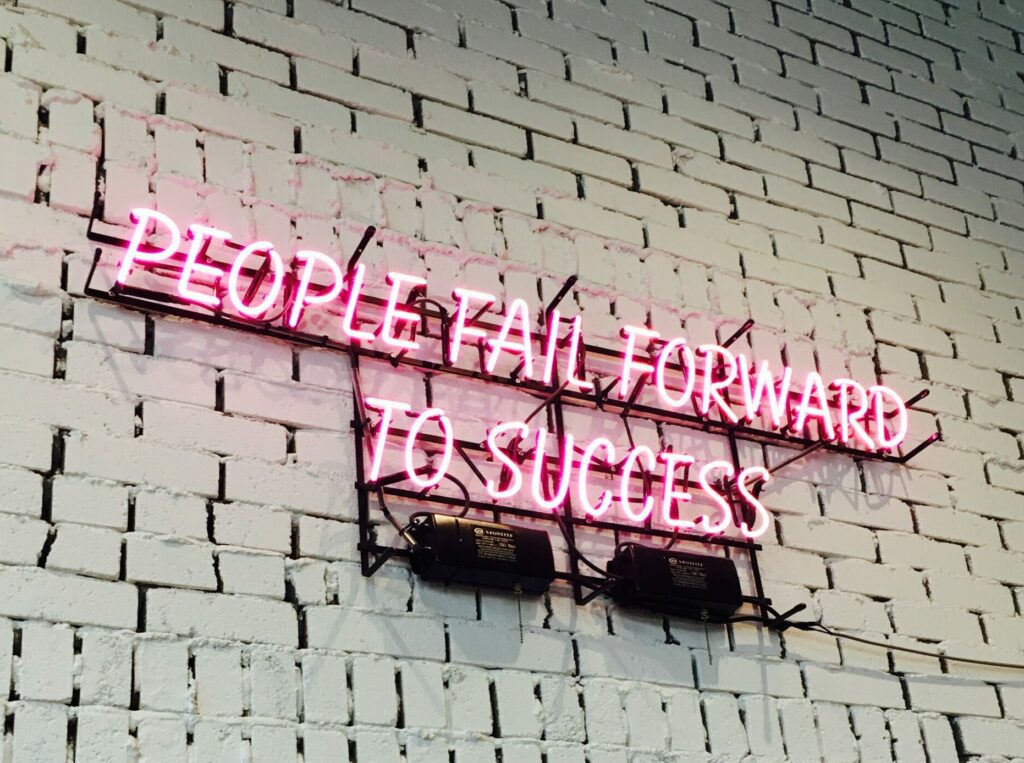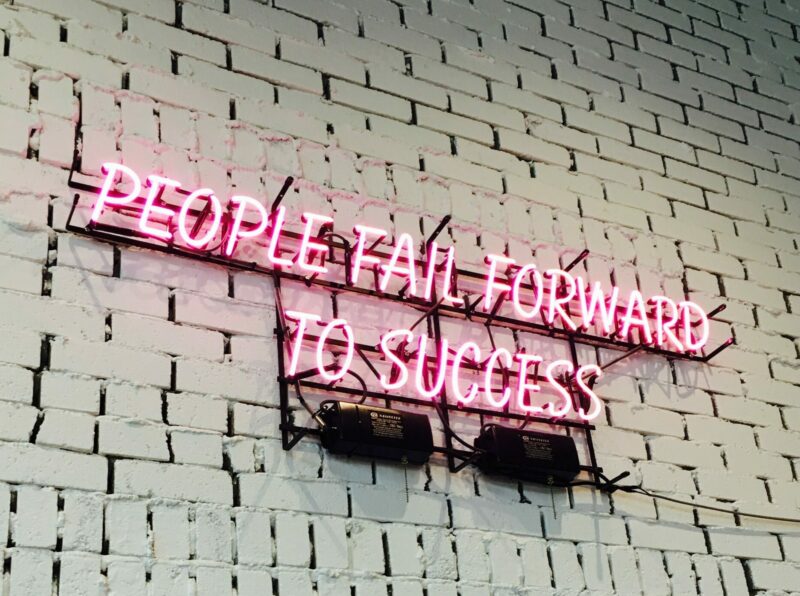By Ted Miller
Some of the most painful experiences we have in our lives come from when we fail at something. Especially something that we care about. Maybe you dropped the ball while giving an important presentation at work or acted in a way you later regretted with a friend or family member. It could even be something more minor, like having an awkward social interaction that you later beat yourself up about because it didn’t go the way you would have preferred. Failing to live up to the expectations of yourself or of others is painful. And for some people, fear of failure can become one of the most significant obstacles. But although failure can be painful, it is often a requirement for our development and can become one of our best teachers if we approach it with a proper attitude.

Learning from Failure Starts with the Proper Mindset
So how do we learn from failure? It’s all about our mindset. The biggest difference between someone who learns from failure and someone who gives up after failure is how they define it. Someone who grows from their failure adopts what is often referred to as a “growth mindset”, where they view whatever challenges they face as an opportunity for growth and learning. They can recognize where they went wrong or made a mistake and next time make an improvement. On the flip side, a person who has a negative view towards failure, or what is often referred to as a “fixed mindset,” believes that if they fail at something, they are not good at it, not realizing that with a proper attitude they can grow or improve. A powerful quote that accurately summarizes this idea is, “learn to fail or fail to learn.”
Examples of Successful People who have Learned from Failure
When you look at the most successful people in any field, be it sports, science, academics, etc., they almost always have failed the most, and often in the most spectacular fashion.
University of California Psychologist Dean Simonton researched history’s most successful scientists and artists. People like Pythagoras, Galileo, Descartes, Tolstoy, and Rembrandt. Simonton’s research found that the most successful scientists and artists are the ones that have failed the most times (Simonton, 1999). One poignant example of this is Thomas Edison. Edison is one of the most prolific scientists in history, but he is also the scientist who has failed the most times. When Edison was working on inventing the storage battery, someone pointed out that he had failed 10,000 times. Edison replied, “I’ve not failed 10,000 times; I’ve just found 10,000 ways that don’t work”. A few thousand experiments later, he successfully created the storage battery. Edison later proudly declared, “I failed my way to success” (Ben-Shahar, 2020).
Other examples of learning and thriving from failure can be seen in sports. Babe Ruth hit 714 career home runs, a record that held for 39 years. But in five seasons, he also struck out more than any other player in the league. Michael Jordan, one of the greatest athletes of all time, once said, “I’ve missed more than 9,000 shots in my career, I’ve lost almost 300 games, 26 times I’ve been trusted to take the game-winning shot and missed. I’ve failed over and over and over again in my life, and that is why I succeed” (Ben-Shahar, 2020).
What did these people all have in common? It was that they adopted a growth mindset toward their failures. They viewed it as a necessary part of developing their skills, an experience they can learn from. Being prepared to fail and to learn from your failures is not just the path to success; it is also the path to a greater sense of well-being.
How to Trick Your Brain into the Right Mindset to Learn from Failure
One simple way to trick our brains into a positive mindset around failure and our challenges is by adding the word “yet” to the end of our shortcomings or failures.
Instead of saying, “I’m not where I want to be in my career,” you can say, “I’m not where I want to be in my career yet.”
Instead of saying, “I don’t have the relationship that I want”, say, “I don’t have the relationship that I want yet.”
Instead of saying, “I’m not confident in who I am,” rephrase that to “I am not confident in who I am, yet.”
By adopting a growth mindset where we do not give up on our challenges and view our failures as stepping stones to our next successes, we can reframe our negative experiences into something that can eventually help us thrive.
So ask yourself: what areas of your life do you have a fixed mindset? How can you redefine your failures? Where can you adopt a growth mindset, and what can you learn from the struggles you have been experiencing?
And don’t forget: “learn to fail, or fail to learn.”
–
Are you finding yourself stuck in the face of opportunity because of your fear of failure? Do you find your mental health may be getting in the way of your goals? We can help. Contact us today to talk to one of our compassionate care coordinators to find out how O’Connor Professional Group can help.
—
References:
Simonton, D. (1999, October 4). Origins of Genius: Darwinian Perspectives on Creativity (First Edition). OXFORD UNIV PRESS (NY).
Ben-Shahar, T. (2020). 12.3 Failure. Happiness Studies Academy. https://www.happinessstudies.academy/

